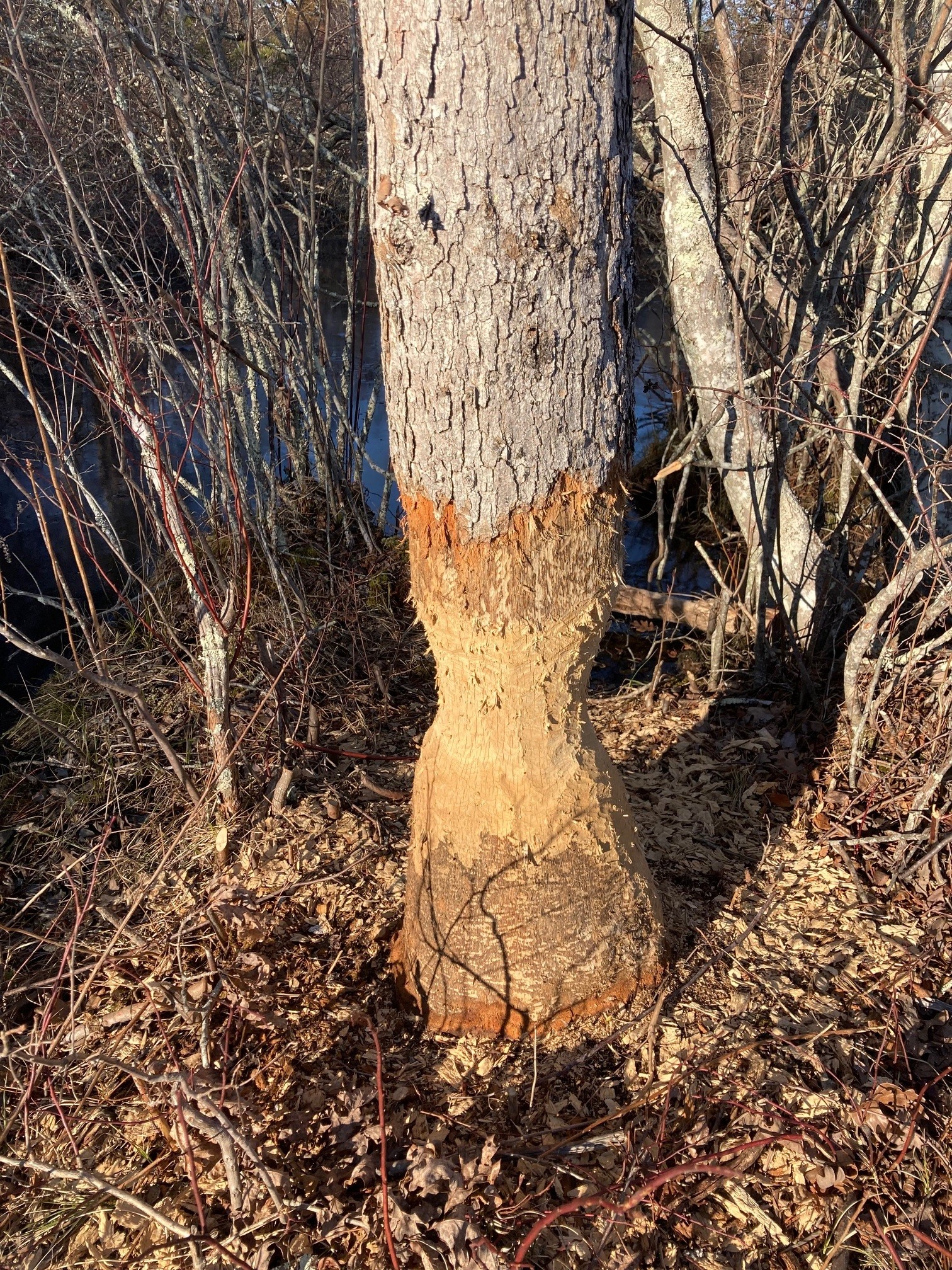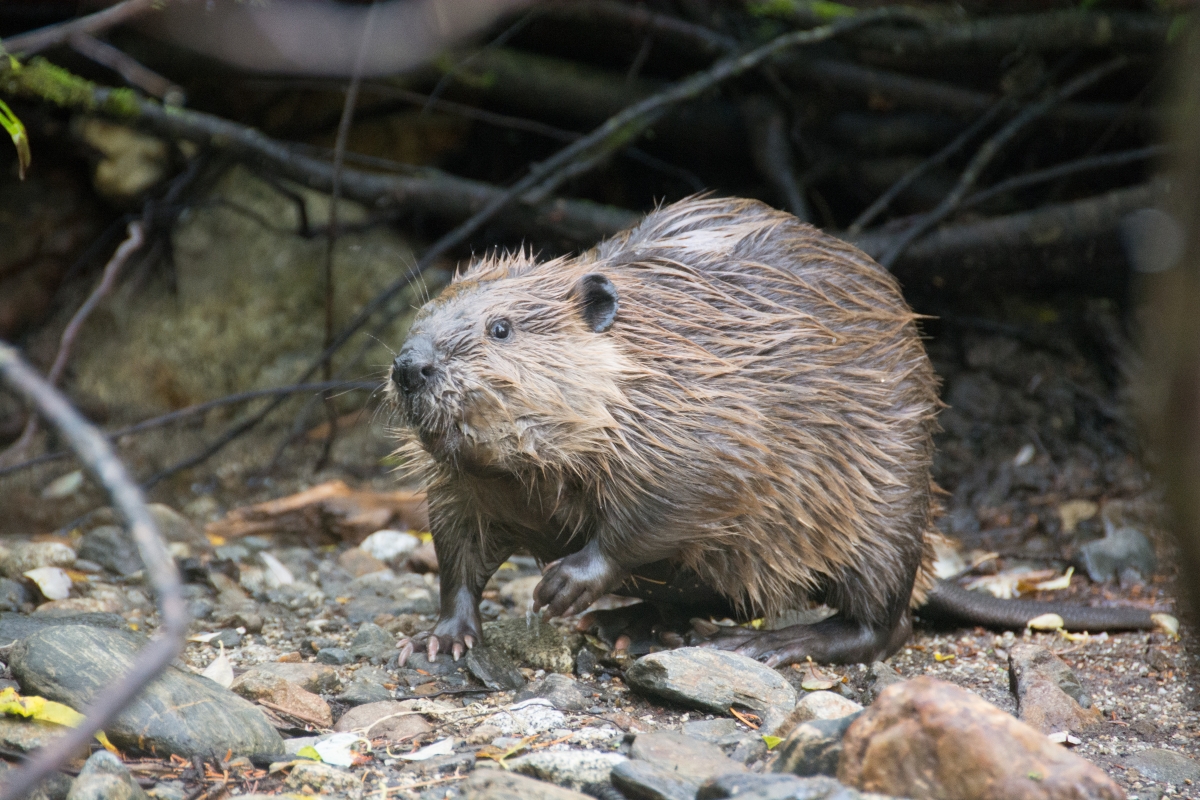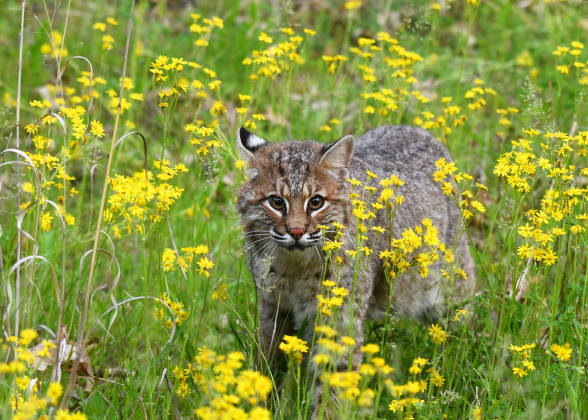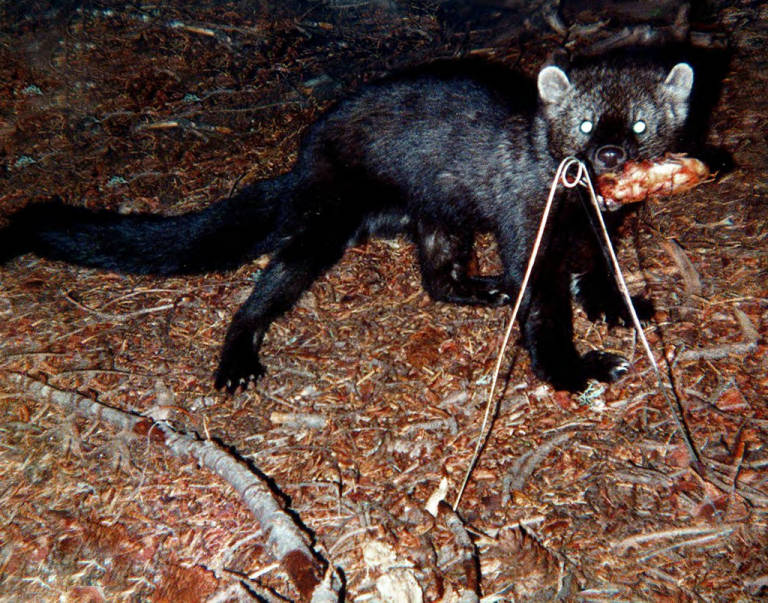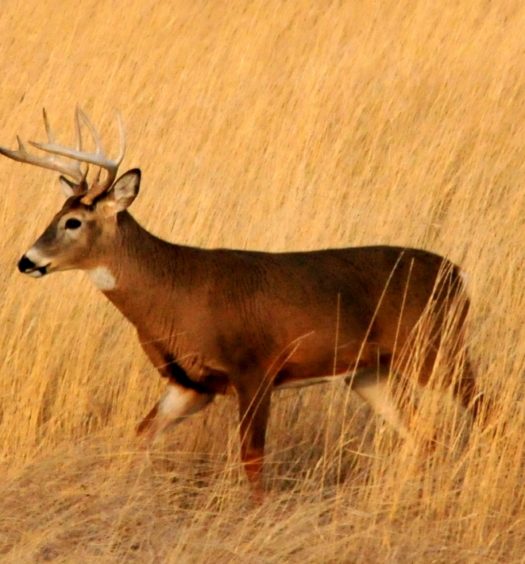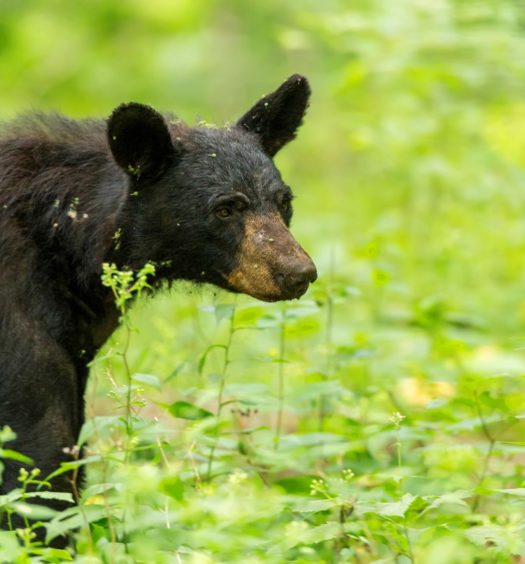In the first of my prior two articles on the history of mammals of Rhode Island, I addressed the wolves, moose, mountain lions and black bears that once roamed the lands of the Narragansett, Wampanoags and Nipmucs in what is now Rhode Island before Roger Williams’s arrival at Providence in 1636, and how each species is faring in the state today. In the second article, I discussed how deer became extinct in Rhode Island, perhaps for about a century, but after a slow recovery are now thriving (perhaps too much so).
This article discusses the virtual disappearance of beaver, bobcats, fishers, New England Cottontails, and other small mammals and their resurgence in recent years. The appearance of coyotes is also discussed.
General
Before the arrival of Europeans, Native peoples hunted for game only as they needed food and clothing. For generations there was a balance between large mammals and human hunters. The arrival of white settlers radically altered that balance, in Rhode Island, as elsewhere in New England and the rest of the East Coast of North America.
The fur trade attracted European explorers to New England even before white settlers. The trade for beavers was particularly lucrative because their fur produced high-quality felt for fashionable hats in the London market. The fur trade introduced by white Europeans led Indians to increase their hunting of beaver and other mammals, since they were much more experienced and better at it than the white settlers. Guns introduced by Europeans made killing easier for Indians and whites alike. The populations of fur-bearing animals, such as beaver, fox and mink, were decimated.
White settlers then began clearing the land to create farms. Numerous forests were cut down and plowed into farms. Many mammals were hunted almost to the brink of extinction including, it is hard to believe today, deer. Deer had also been a staple of large mammals, such as wolves, bears and mountain lions.
From the time of the late 17th century into the 19th century, farming was vital to the state’s economy. This can be seen in Rhode Island’s forests today, where stonewalls are still prevalent. Wild mammals, needing forest to thrive and survive, lost most of their natural habitats.
This article, as does my previous one, relies in part on Roger Williams’s observations on A Key to the Language of America, written by Roger Williams in 1643, just seven years after he founded Providence. I used a wonderful 2019 publication published by Westholme Publishing called the Tomaquag Museum edition.
The Key was the first book published in English on Indian languages of North American Indians. Of course, Williams focused on the language of the Narragansetts, who dominated the southern mainland of Rhode Island and most of the rest of the mainland of Rhode Island at the time of, and before the arrival of, white settlers in southern New England. While the Narragansetts did hunt for wild birds and caught fish, the hunting of mammals, and the use of the them for food and clothing, was vital to them.
A “Golden Age” for Wildlife?
Today, there are many fewer farms in the Rhode Island and more forest lands than in the 1800s and early 1900s.
A recent Boston Globe article by Billy Baker called today a “golden age” for wildlife in New England. This is a bold statement. Of course, it is not true for some species, such as wolves, moose and mountain lions that used to roam and breed in Rhode Island but now no longer do. It is true for many other species, especially deer.
The comeback of certain species of mammals has been due in large part to federal, state and local programs promoting environmental conservation. For example, the Rhode Island Department of Environmental Management (“DEM”) announced in its annual report for 1949:
Great Swamp, famous in colonial history as the site of the last stand of the Narragansett Indians and once noted for its wildlife, is our first land acquisition project under the [federal] Pittman-Robertson Act. Negotiations are underway to purchase some 2,600 acres of this area . . . . This will be a State-owned wildlife management area, devoted entirely to the restoration of wildlife.
By 1987, the total land purchased under the Pittman-Robertson Act was 8,300 acres. In addition, DEM, often in conjunction with researchers at the University of Rhode Island, has conducted research and survey projects involving mammals and their habitats. Wild turkeys were successfully reintroduced.
In his Key, Williams mentions raccoons, otter and wildcats (probably bobcats and lynx). He also mentions grey foxes and red foxes. He noted that he met Indians who claimed to have seen black foxes, but no one had been able to capture or kill one. Grey foxes resemble the well-known red foxes, but are a bit smaller than red foxes.
In 1900 a naturalist from Newport published a list of mammals known to have inhabited Rhode Island. The list includes: Virginian Deer [white-tailed deer]; Moose; American Beaver; Northeastern Cottontail; Northeastern Panther; Wildcat Lynx; Red Fox; Timber Wolf; Black Bear; Raccoon; Northeastern Otter; Skunk; Southeastern Mink; Bonaparte Weasel; New York Weasel; and Fisher. Perhaps due to an oversight, grey foxes and bobcats were not mentioned. Smaller mammals, such as porcupines, squirrels, groundhogs, mice and moles, were not mentioned. The Northeastern Cottontail reference is probably to New England Cottontail (see more on them below).
In Rhode Island now, there are plenty of red foxes, raccoons, Eastern Cottontail rabbits, and other smaller animals. From my home on the Queen River in South Kingstown, I have seen (albeit infrequently): river otter, beaver, mink, red fox, racoons and deer.
I am not disappointed not to have seen skunks on our land. Curiously, skunks used to be trapped in the state for their fur. From 1949 to 1959, trappers on the average took 475 skunks per year. The hunters received about $10 per pelt. Today, presumably, there is not an active market for wearing skunk.
Beaver
In his Key, Roger Williams mentions beaver. “This is a beast of wonder for cutting and drawing of great pieces of trees with his teeth, with which, and sticks and earth I have often seen fair streams and rivers dammed up. He builds his house in stories, wherein he sits dry in his chamber, or goes to the water at his pleasure.” Williams apparently did not realize that beaver had been native to England, but had been killed as a pest to the point of extinction.
Beavers became extinct in Rhode Island, probably in colonial times, mainly due to over-hunting and trapping for their furs. Beaver pelts even became a sort of currency in early colonial times.
In modern times the importance of beavers to the ecology of forests and streams has been increasingly appreciated nationally. Wherever they appear, beaver flood streams, thereby providing lush water lands for a broad range of animal life. On occasion, the flooding causes problems in areas populated by humans; in those cases, the beaver are trapped and moved to a more remote area (not killed, which used to be done).
Because beaver did not entirely disappear from New England, they were able to make a slow comeback, first in Massachusetts and Connecticut. In 1956, a small colony of beavers attempted to reestablish themselves in North Smithfield, but after a few months the beavers abandoned the site. DEM has written recently, “The first [successful] colony in the state after their disappearance was observed in 1976. Today, beaver populations have grown, and they continue to provide habitat for wildlife in Rhode Island.”
Bobcats and Lynx
Bobcats have a short “bobbed” tail with a white tip—thus giving the cat its name. They have black, tufted ears adorned with white spots, and their fur is reddish to tawny brown. Patterns of black spots and stripes vary among individuals. They tend to be solitary animals. They can travel up to twelve miles in a night.
It is likely that bobcats became extinct in the state by the late 1700s and into the 1800s, but then made a slow recovery in the 1900s. The authors of a book on Rhode Island mammals published in May 1962 wrote:
The bobcat is not common in Rhode Island. Only two specimens have been handled in recent years: a cat that was shot near the village of Chepachet in the Town of Glocester in the fall of 1958 and one hit by a car on Log Road in Smithfield, during March 1962. The other authentic records consist of one in Cumberland in 1941; one in Hopkinton in 1940; 10 in Richmond during the period 1934-37; and one taken somewhere in Washington County in 1933.
It appears that bobcat, while still rare to spot due to their low population and shy nature, have made a decent comeback in the state. In 2019, DEM reported that as of October 2019, it had received over 75 reported sightings in the state in the prior years, including 35 documented with a photograph or video. While the reporting was not an official survey, a DEM official stated that there was a definite upward trend in the prior ten years. A DEM official in 2021 confirmed that bobcat sightings were on the rise in the previous four to five years; prior to then there may have been one or two sightings reported to the DEM in a year.
Some researchers in 2021 estimated that there were about 80 to 85 bobcats in the state. A 2022 DEM study concluded that bobcats thrive on forested wetland habitats, while increasing road density and shrub cover environments reduce their numbers.
DEM and the University of Rhode Island monitored bobcat behavior recently by trapping several and attaching GPS collars to them in South Kingstown, Narragansett and Charlestown. In 2017, a male bobcat fitted with a GPS collar in 2017 visited Narragansett east of the Narrow River from April to June, showed a wider range around the Narrow River watershed in Narragansett from July to October, and moved inland to South Kingstown for much of the time from October to December.
Rhode Islanders who took photographs or videos of bobcats in their yards were published in the Providence Journal in 2019 and 2021—one in Warwick and another in Narragansett. A Lincoln resident from her backyard took photographs of a mother bobcat and three of her adorable kittens in August 2021.
The Canada Lynx was likely present in Rhode Island during the times of Roger Williams. Today in the eastern United States, however, lynx are mainly known to populate northern and western Maine. A nature magazine stated that “This cat is also found in smaller numbers in far northern New Hampshire as well as rarely in the state of Vermont. There have been no confirmed sightings in the other New England states.” It appears lynx prefer areas with deep snow; their wide paws allow them to walk easily on snow, making it easier for them to catch small animals. But with snow as a requirement, attracting lynx to Rhode Island now would be difficult, particularly in an age of global warming. (In the eighteenth century, there was something akin to a mini-ice age in North America. For example, Narragansett Bay in Rhode Island and the Hudson River near New York City in a few instances were known to freeze.)
River Otter
Suitable habitat for river otters is any wetland that provides adjacent bank vegetation, burrow sites, and a food supply of mussels and fish. Otters can be found in streams, rivers, ponds and lakes. During the winter, they may leave ponds and lakes that freeze over for the open water of rivers and streams.
River otters can be seen at any time of day but are considered to be nocturnal, or most active at night. They are not social. A group may be comprised of a female and her young. Generally, the males live separately except during the breeding season.
Otters are very intelligent and show a great curiosity and playfulness. Excellent swimmers and divers, a common activity is sliding into the water along riverbanks, seemingly just for pleasure. I have seen them slide on the ice for fun (Queen River usually only partially freezes).
The numbers of river otter declined to small numbers in the 1800s due to loss of habitat and over trapping. It is not known if they entirely disappeared. Trappers took on the average 17 otter per year from 1950 to 1960. Otter pelts are valuable, but they are still rare in the state. Today, otter are making a decent comeback in the state.
Fishers
Fishers, a carnivorous mammal that thrive on small mammals and dead deer, are sometimes called fisher cats. But they are a member of the same family as river otters, weasels and mink. They were driven to extinction in the state in the eighteenth and nineteenth centuries, but they are now making a comeback. A University of Rhode Island doctoral student said in 2021 that fishers were “once known as a deep dark forest-dwelling animal” but are “now living in people’s backyards and in urban settings.”
URI is now conducting a three-year study to research fisher populations. DEM says they are in every community except for the islands in Narragansett Bay and Block Island. Another study indicates that the descendants of the fishers in the state today came from New Hampshire.
My parents, when they once lived in Kingston, had a pen for hens ravaged by a fisher. Fishers are known for raiding chicken coops.
New England Cottontail

New England Cottontail’s population in New England is patchy. One of its top places is southern Rhode Island (U.S. Fish & Wildlife Service)
The New England Cottontail, sometimes called the gray rabbit or wood hare, are the only rabbit native to New England and east of the Hudson River in New York. Since 1960, the range of the New England Cottontail shrank by over 80 percent.
Today in New England, the New England Cottontail is found in only a few limited regions. One of the major regions for its population is southern Rhode Island, including all of Washington County. There is a small pocket in the northeastern part of the state.
There are two reasons for the decline in numbers. First is loss of habitat and maturing of forests. New England Cottontails need shrubs and thickets to thrive. As forests mature, shrubs and thickets get thinned out, resulting in a decline in the New England Cottontail population. In addition, from the late 1800s through the 1960s, large numbers of Eastern Cottontail were introduced to areas across New England. Today, the common Eastern Cottontail occupies most of New England (except for Maine) and in most areas has replaced the New England Cottontail.
It is difficult to tell the two species apart. In general, New England Cottontail have shorter ear length, a slightly smaller body and a black spot between their ears compared to their counterparts. But skull shape and genetic testing are the only sure way of telling.
From 2006 to 2015, the New England Cottontail was classified as a candidate for Endangered Species Act protection. DEM is coordinating with other state wildlife departments and the U.S. Fish & Wildlife Service to bolster the populations of New England Cottontail.
Coyote
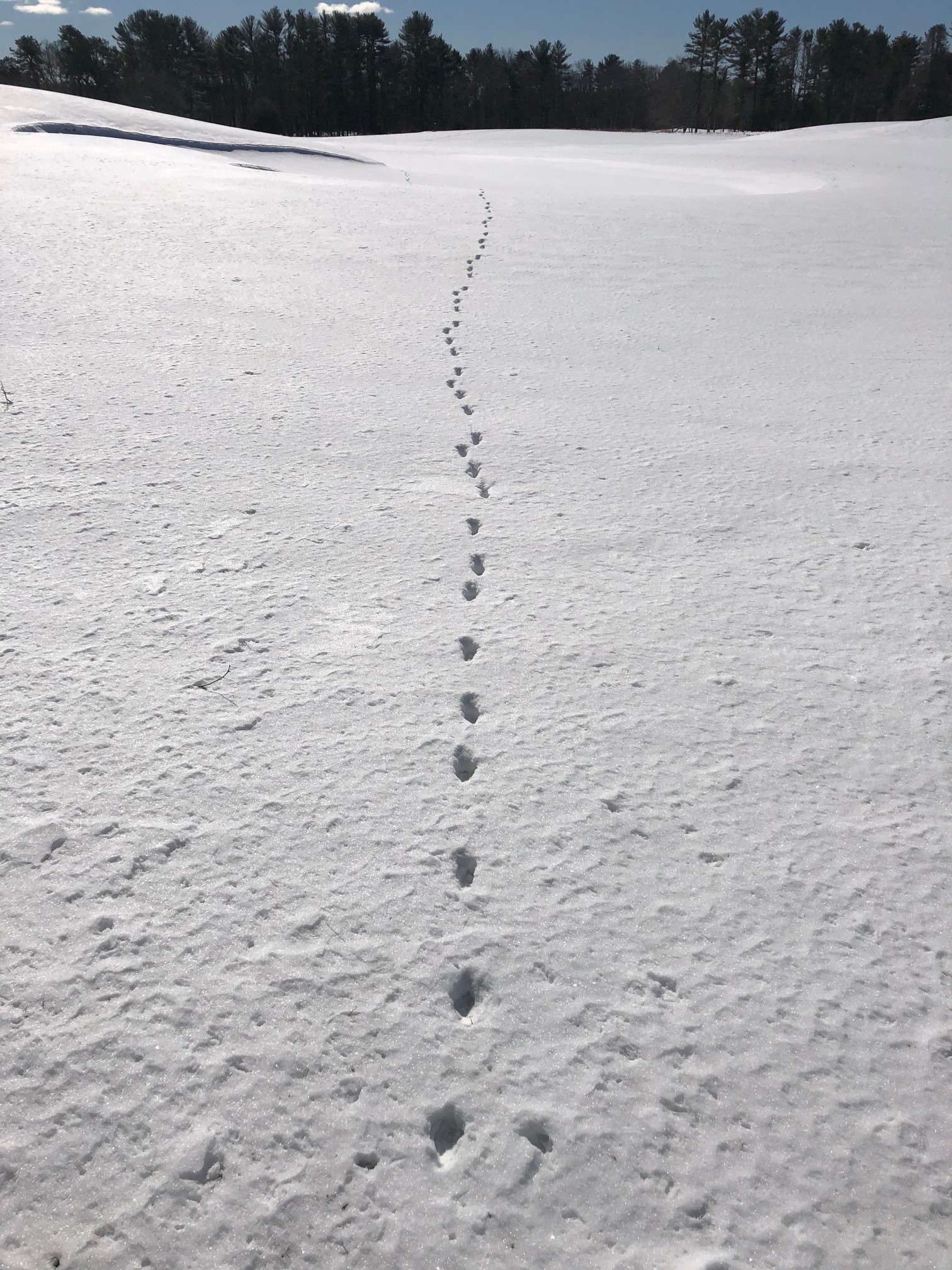
The author saw these tracks minutes after seeing a coyote at Richmond Heritage Trail in 2021. Coyote are known for making tracks in a single file (Christian McBurney)
Coyotes were not native to Rhode Island but migrated to the state in modern times. Eastern Coyote moved south from Canada into New England. They appeared in Maine in the late 1930s, Vermont and New Hampshire in the mid-1940s, Connecticut in the mid-1950s, and western Massachusetts by the early 1960s. A study on Rhode Island mammals published in May 1962 stated that coyotes had not appeared yet in the state but likely would in the near future. DEM now states that coyote arrived in the state by the mid-1960s. They were widespread in Rhode Island by the 1980s. Excepting Block Island, they are now in all Rhode Island communities, even on Aquidneck Island.
Coyotes are a tenacious predator feasting on other small mammals and birds. They probably help a bit to keep down the deer population by going after young deer. They are thriving without having to worry about their natural predators—wolves and mountain lions.
Contacts between humans and coyotes are rare, since the latter like dense woods and seek to avoid humans. Part of their success appears to be that while they are prevalent, they have posed little threat to humans or their pets.
My wife and I have heard them at nights on the Queen River, with excited howls and yelps ready for the kill, or lone howls piercing the silent black night. Sadly, sometimes we hear the wails of their prey—either deer or geese. At Richmond Heritage Trail, we have spotted coyote on two of three mornings we have visited it, including seeing a magnificent specimen in the snow, with a full winter coat of fur.
My brother, Shaun, saw one hiking on a rarely used trail in South Kingstown and thought the coyote was trying to lure his dog deep into the forest into an ambush by other coyotes. His wife, Tricia, once had a coyote follow her and her dog at a short distance on a quiet trail. (Residing in West Kingston on a hill with forests extending beyond their backyard, they have also had fishers and black bear visit their yard.)
Conclusion
Currently, the state permits during various hunting seasons game hunting for deer, coyote, raccoon, cottontail rabbit, gray and red squirrels, and red and gray foxes. Hunting for coyote on private land can be done at any time. The state allows a short period in December for hunting fishers.
Rhode Island’s DEM has a plan to continue making the state a safe place for wildlife. With the approval of the U.S. Fish and Wildlife Service, it adopted its first Wildlife Action Plan in 2005. With assistance from The Nature Conservancy and URI, Rhode Island was the first state in the nation to publish its ten-year revision.
One mammal that Indians raised for companionship and to hunt was the dog. Williams provided the name for “dog” in four different dialects, which he claimed could be heard within a thirty-mile radius: Ayím (Narragansett); Anùm (Cowesett); Arúm (Quinnipiac); and Alùm (Nipmuc).
There remains one place in Rhode Island where many of the animals identified in this article can be seen today—the Roger Williams Park Zoo.
Sources
General:
The version of Roger Williams’s A Key into the Language of America I used was the Tomaquag Museum Edition, published by Westholme Publishing of Yardley, Pennsylvania, in 2019. Its editors are Dawn Dove, Sandra Robinson, Lorén Spears, Dorothy Herman, and Kathleen J. Bragdon.
William Cronon, Changes in the Land, Indians, Colonists, and the Ecology of New England (New York, NY: Hill and Wang, 1983), 97-107.
Billy Baker, “The New Golden Age of Wildlife in New England,” Boston Globe, April 17, 2022. Online at https://www.bostonglobe.com/2022/04/17/metro/new-golden-age-wildlife-new-england/?s_campaign=8315.
Harmon Kallman, ed. Restoring America’s Wildlife, 1937-1987 (United States Department of the Interior, Fish and Wildlife Service, 1987).
Rhode Island Mammals:
Edgar A. Mearns. The Native Mammals of Rhode Island (Newport, RI: Newport Natural History Society, July 1, 1900).
John M. Cronan and Albert Brooks. The Mammals of Rhode Island. Wildlife Pamphlet No. 6. Wakefield, RI: Rhode Island Department of Natural Resources, Division of Conservation, 1968.
https://babel.hathitrust.org/cgi/pt?id=mdp.39015017475198&view=1up&seq=4&skin=2021.
Todd McLeish. “Where the Wild Things Are. What’s the Story Behind the Increased Spotting of Bobcats, Bears and Coyotes in Rhode Island?” Rhode Island Monthly, June 17, 2016. Online at https://www.rimonthly.com/where-the-wild-things-are-2/. (Including fishers).
Rhode Island Department of Environmental Management. Rhode Island Wildlife Action Plan (RI WAP). Online at http://www.dem.ri.gov/programs/fish-wildlife/wildlifehuntered/swap15.php.
Beaver:
“Beaver.” Rhode Island Department of Environmental Management. A PDF accessible at http://www.dem.ri.gov/programs/bnatres/fishwild/pdf/beavers.pdf
Bobcat and Lynx:
“Bobcat.” By the Rhode Island Department of Environmental Management. A PDF accessible at http://www.dem.ri.gov/programs/bnatres/fishwild/pdf/bobcat.pdf
Jason Vallee. “Bobcat Sightings are on the Rise in Rhode Island.” Westerly Sun, Oct. 12, 2019. Online article at https://www.thewesterlysun.com/news/westerly/bobcat-sightings-are-on-the-rise-in-rhode-island/article_dfc15d90-ec61-11e9-8fcf-8fdda1c60f0a.html
“Bobcat.” Narrow River Preservation Association. Online at https://narrowriver.org/bobcat/
Jack Perry. “Bobcats “do what they want to do’—Sometimes That Means Hanging Out in a Warwick Yard.” Providence Journal, Sept. 25, 2020 and updated Oct. 13, 2020. Online article at https://www.providencejournal.com/story/news/coronavirus/2020/09/25/bobcats-lsquodo-what-they-want-to-dorsquo-mdash-sometimes-that-means-hanging-out-in-warwick-yard/114138172/
Jack Perry. “First, He Thought It was his Cat and Then He Realized It was Three Bobcats in His Yard.” Providence Journal, Oct. 15, 2021. Online article at https://www.providencejournal.com/story/news/local/2021/10/14/first-he-thought-his-cat-then-he-realized-bobcat/8450807002/
Jessica A. Botelho. “Family of Bobcats Spotted in Lincoln Backyard.” NBC 10 NEWS, Aug. 20, 2021. Online article at https://turnto10.com/news/local/family-of-bobcats-spotted-in-lincoln-backyard
Amy E. Mayer, Thomas J. McGreevy Jr, Charles Brown, Laken S. Ganoe, Brian D. Gerber. “Transient persistence of bobcat (Lynx rufus) occurrence throughout a human-dominated landscape.” First published in Population Ecology, March 23, 2022. Online available at https://esj-journals.onlinelibrary.wiley.com/doi/10.1002/1438-390X.12123
“Canada Lynx.” Nature of New England, 2001-2022. Online at http://www.nenature.com/Lynx.htm
Fishers:
“Fishers.” Rhode Island Department of Environmental Management. A PDF accessible at http://www.dem.ri.gov/programs/bnatres/fishwild/pdf/fisher.pdf
Allie Lewis. “URI Scientists to Study Growing Fisher Population.” The Narragansett Times, Jan. 11, 2021. Online article at https://www.ricentral.com/narragansett_times/uri-scientists-to-study-growing-fisher-population/article_d29aa0c6-544e-11eb-bfe8-8fea5c1c0fab.html#:~:text=Currently%2C%20the%20Rhode%20Island%20Department,manage%20the%20population%20more%20effectively.
New England Cottontail:
“New England Cottontail.” U.S. Fish & Wildlife Service. PDF accessible at https://www.fws.gov/sites/default/files/documents/NEcottontail2015.pdf.
Coyote:
Bruce Fellman. “Guess Who’s Coming to Dinner.” Providence Journal, Jan. 13, 1980, Sunday insert, 7-11.



